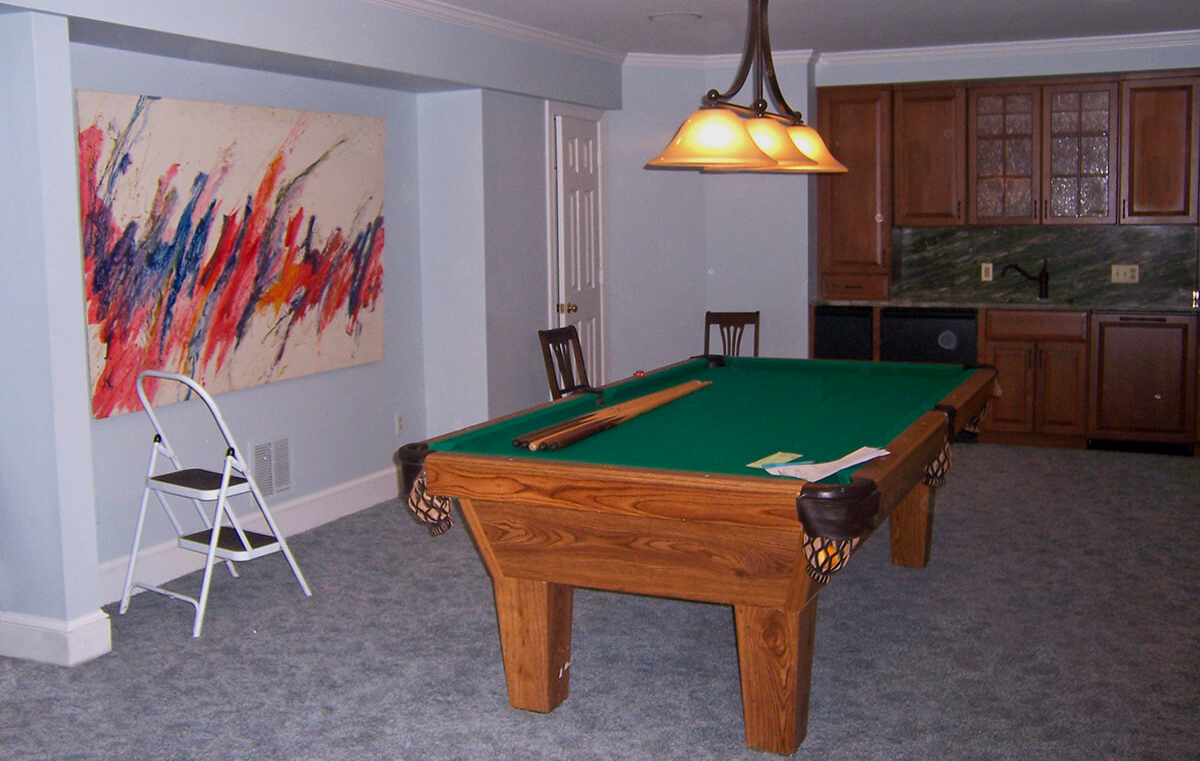
When adding new livable space in a home, the first place many people turn to is the basement. A basement can be a great choice because it does not involve adding additional foundation, roofing, or exterior walls. The infrastructure is there as a blank canvas, ready for a home theater, a guest room, a recreation room, or whatever else might be lacking in the upstairs floor plan.
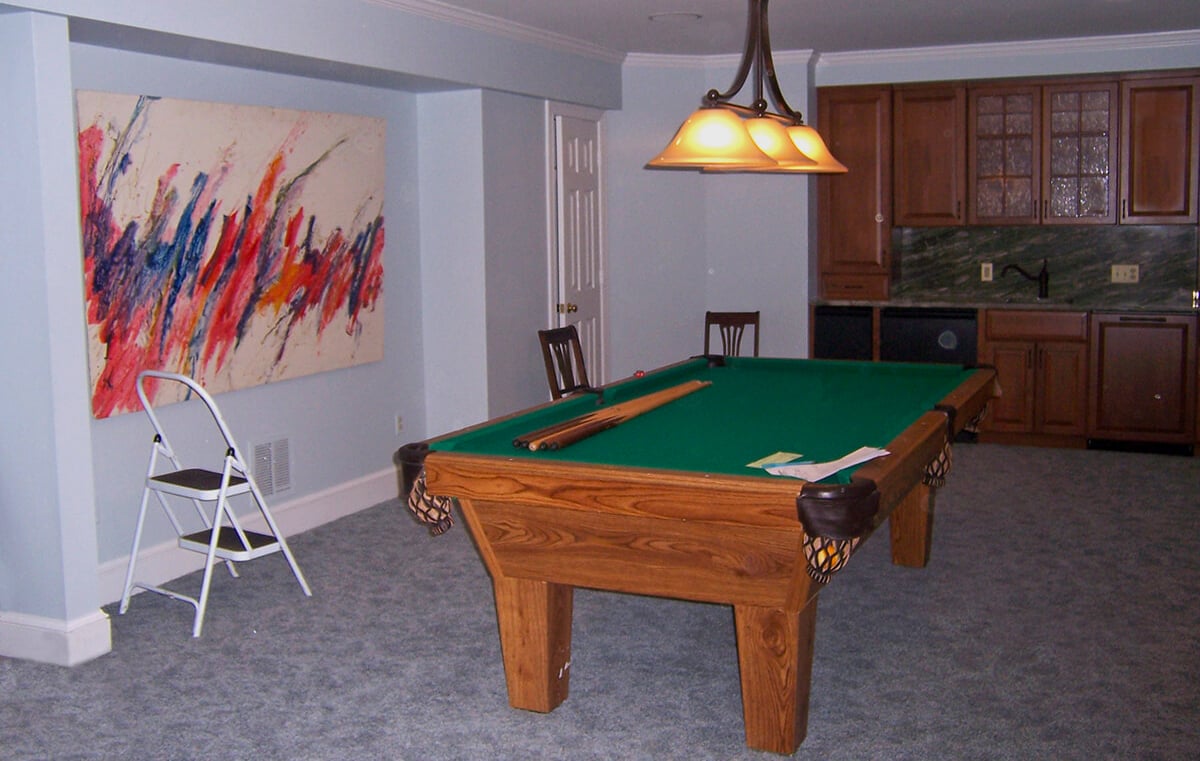
This basement game room with wet bar had a support post that could not be moved. It was successfully hidden behind drywall in the alcove to the left. HVAC ducts are also hidden in the drywalled bulk-head above the alcove
But that does not mean basement renovation comes with zero complications. There are challenges to consider before taking that napkin sketch of your ideal basement layout to a renovation firm for a price quote.
There are a few things you need to consider before you get too far into the process. Knowing the potential challenges can make for a much more pleasant renovation experience.
Let’s take a look at a few of those challenges and how to overcome them as you embark on a renovation of your basement space.
Ceiling Height
Unless it's a newer home with nine or even 10-foot walls to start with, ceiling height can be one of the first issues you face in a basement renovation. In older homes, ceiling height tends to be an issue. In previous eras, basements were never envisioned as living space. They were where the homeowner found root vegetables, a coal bin, and the furnace. Maybe there were a few shelves of mason jars full of preserved fruits and vegetables, but it wasn't a comfortable living space. It was a place to grab a few potatoes, stoke up the coal fire, and exit that cramped, creepy space as soon as possible. We've come a long way. Now basement space is seen as prime real estate, and ceiling height does not need to stop you from claiming this space for greater and better use.
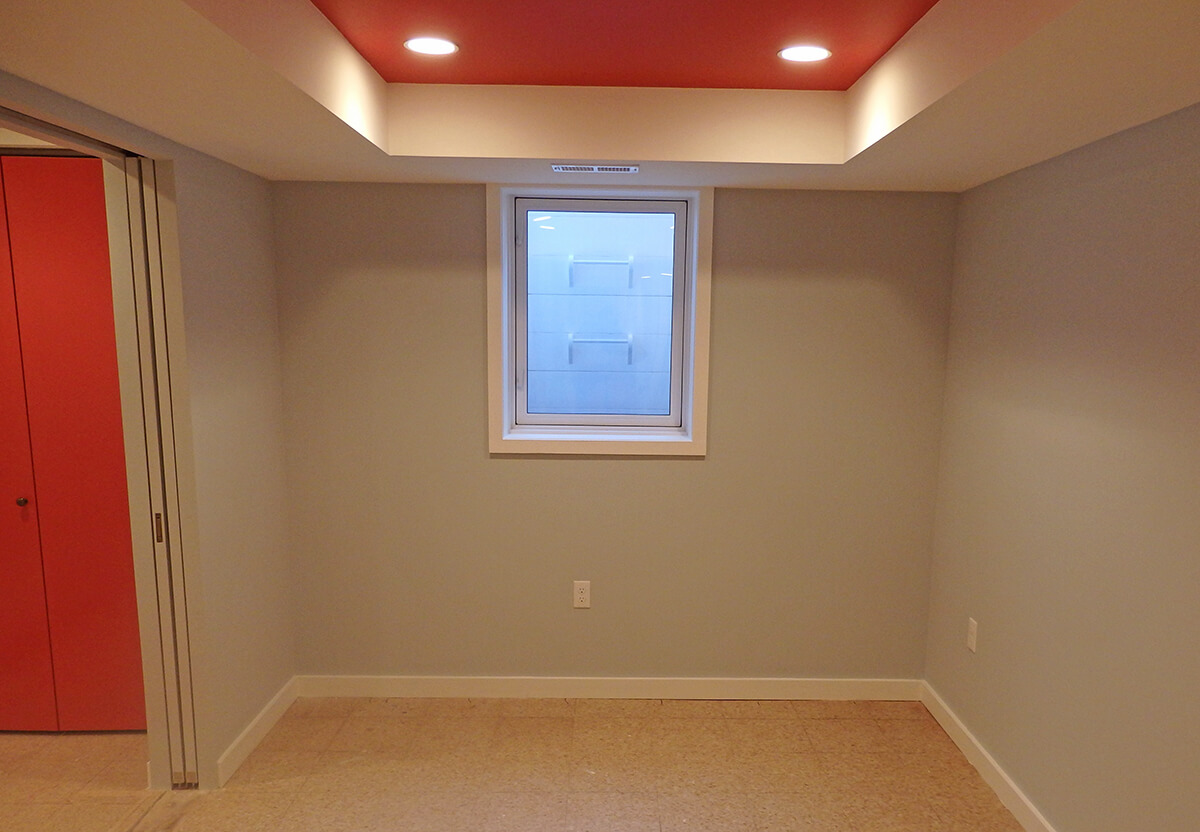
This basement bedroom features a coffered ceiling that does two things: It gives the feeling of increased height and it hides HVAC ducts that run around the perimeter of the room. The exit window in the background has a built-in ladder. A double set of pocket doors to the left makes the space feel more open.
As you consider renovation plans, what are some best practices when it comes to dealing with ceiling height? Often it is a matter of building codes. In the Washington DC area, ceilings need to be approximately 7 feet in height. That can be a challenge, as beams or ductwork might fall below this height. But if there are obstructions that fall below, you might be able to provide design features that minimize the impact. Pipes, gas lines, and other equipment can also be rerouted to the perimeter and enclosed in attractive bulkheads to create a coffered or tray ceiling. The point is, if there are obstacles falling below minimum height requirements, there is often a way to work around that challenge.
How do you handle it when the ceiling height is uncomfortably low or does not conform to building codes no matter where you reroute pipes, ductwork, or gas lines? You might consider digging down. The average footing (what the foundation wall sits on) extends below the surface of the basement slab, so you can often dig down without compromising the base of the footing. This may not create all of the extra clearance you are looking for, but it could easily add several inches to the ceiling height after excavating and pouring a new concrete basement floor.
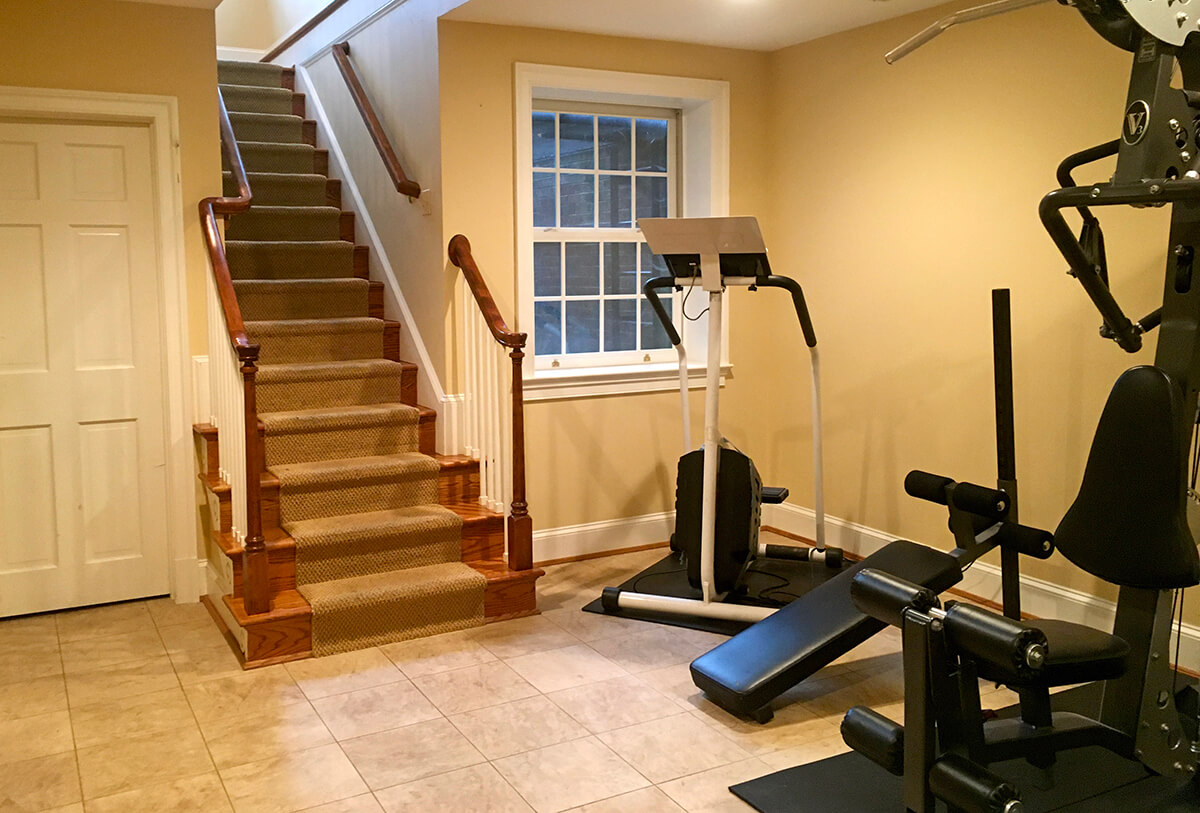
This basement exercise room is housed beneath a large home addition. It features trim details that match the main floor level of finish, full ceiling height, and full sized windows that bring daylight into the space. The tile flooring is moisture resistant.
But maybe you need to go to greater depths in lowering the basement floor. If necessary, you could dig deeper than the existing foundation footings to achieve a much higher ceiling. This would involve bringing in designers and engineers to study the feasibility and draw up plans; it will be more expensive to go below the footing, but quite possibly will save money as compared to an addition or avoid zoning issues.
Managing Moisture
Another challenge in basements old and new is moisture. It’s an issue that needs to be tackled before building out a basement into livable space.
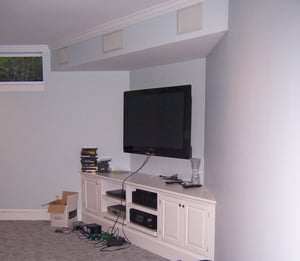
Newer homes should, in theory, have few problems with water infiltration. They typically take into account a stormwater plan, which should divert moisture away from the house and may include at least one sump pump. Older homes have drainage systems that may have deteriorated over the life of the home, allowing the introduction of moisture.
Although you may not be able to prevent all moisture intrusion through foundation walls, you may be able to mitigate these issues and complete your basement renovation. There are steps you can take to block moisture intrusion and prevent it from adversely affecting the interior.
Generally, diverting water or creating a barrier is the basis of any solution. Whenever possible, a drainage pipe should be installed around the perimeter of the basement to draw moisture away from the home. A membrane can also be placed on the foundation walls. This creates a barrier that prevents moisture from infiltrating the room. In newer construction, the perimeter pipe and moisture barrier are found on the outside of the foundation. But waterproofing an existing home often involves installing these same systems on the interior of the basement and adding exterior enhancements to divert water from the foundation.
Final Considerations
A basement renovation can be a cost-effective way to gain more usable space in your home and add to its resale value. <link to previous post.> Challenges are common, but in most cases can be resolved with the right design and specifications. And even if the project involves excavation to gain ceiling height, it might be worth the time, effort, and expense to add features you've been missing up to this point in your home.
To learn more about renovating existing space like a basement into a livable, enjoyable space in your home, contact Gilday for a consultation today!
Want to learn more about the benefits of renovating your basement, then please consider downloading the free eBook titled "The Essential Elements of Renovating an Older Home."
8820 Brookville Road,
Silver Spring, MD 20910
© Gilday Renovations 2025
info@gilday.com


Leave a comment